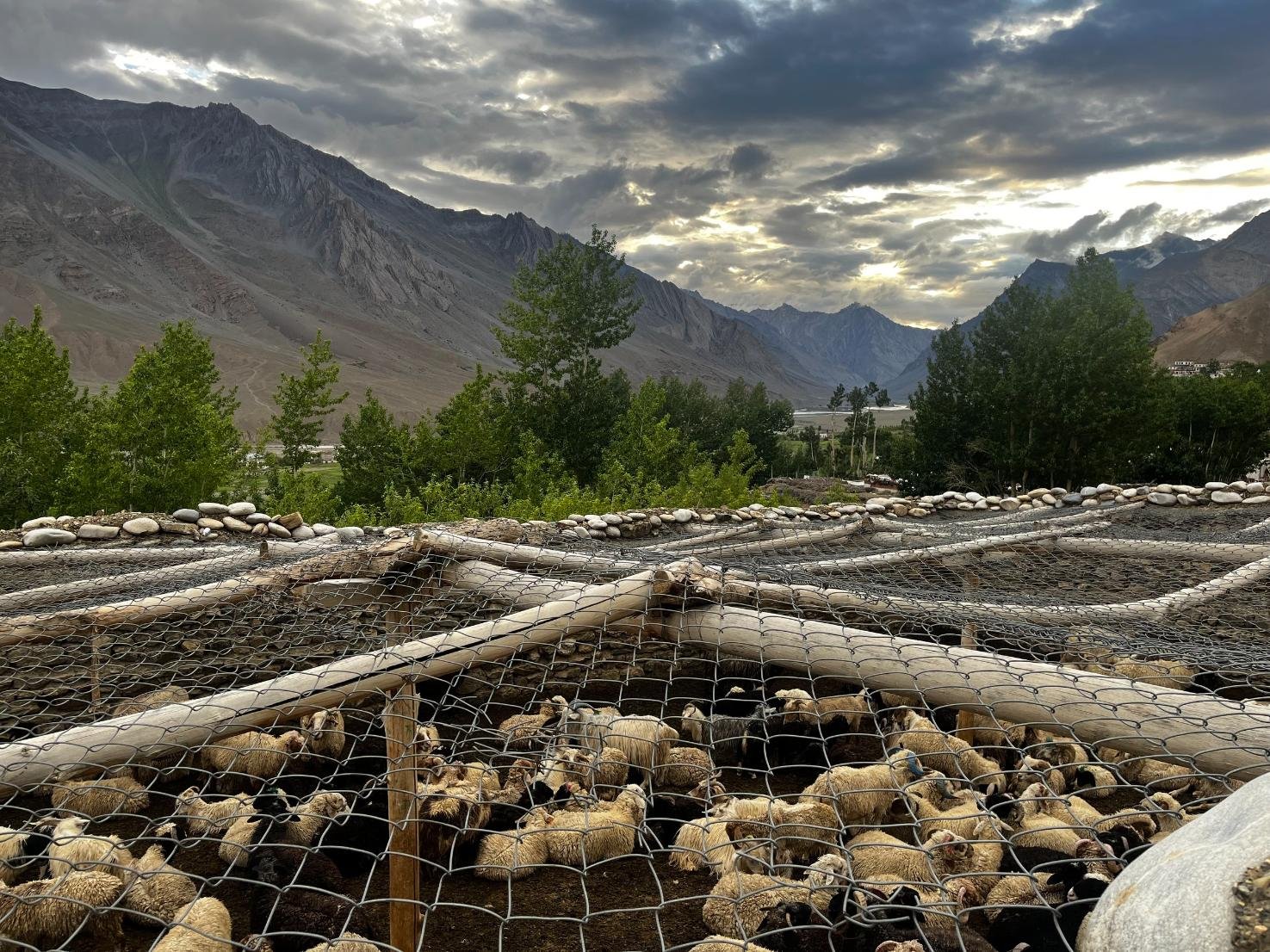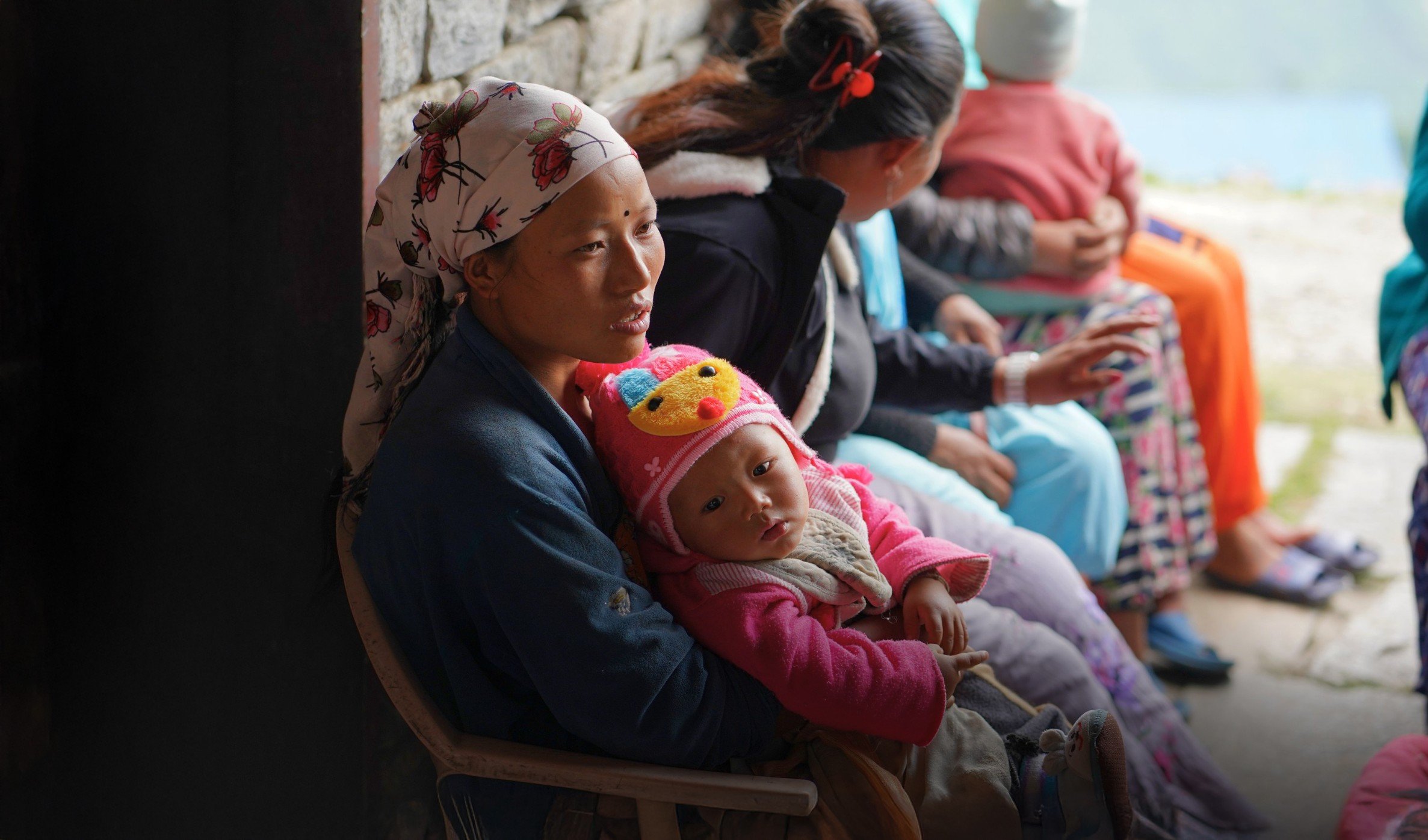
Environment
Without a stable environment, the basic conditions necessary for life in the Himalaya are compromised, threatening survival and well-being. We are committed to supporting communities and ecosystems in these fragile regions, enabling them to sustain their ways of life and effectively adapt to evolving challenges.
Context
Why we support the Himalayan environment
The Himalaya, often referred to as the world’s Third Pole, faces an escalating threat from climate change that endangers local communities, livelihoods and biodiversity across the region.
The majority of the population living in the Himalaya depend on the natural environment for their sustenance and survival. The very essence of daily life in the Himalaya is intertwined with the health of its environment, making the challenges posed by a changing climate not just a distant concern, but an urgent, immediate issue that affects the well-being and future of all of its inhabitants.
Conservation
Snow leopards
Snow leopards live in high-altitude environments that are particularly sensitive to climate change. Protecting snow leopards not only helps conserve a majestic and enigmatic species but also supports the broader health and stability of their entire ecosystem.
In the Indian Himalayan region of Ladakh, we work closely with the Snow Leopard Conservancy India-Trust to support local communities to safeguard their livestock from snow leopard encounters. By training locals and providing materials to build snow leopard-proof enclosures, we help safeguard both farmers' livelihoods and the future of snow leopards.

Conservation program stats from the last year
-

5
Fully enclosed livestock corrals built to reduce conflict with snow leopards and foster coexistence
-

140
People (included 77 women) benefited from snow leopard-proof corrals
-

92
Locals (50 women) in 2 villages became committee members for sustaining snow leopard conservation efforts

Conservation & climate change
Support AHF to work with local communities in Ladakh, India on snow leopard conservation, prevent human-wildlife conflict and adapt to the effects of climate change.
Earthquake relief
Emergency response
The Himalayan region is prone to earthquakes, monsoons, landslides and floods due to its unique geological and climatic conditions. In the aftermath of natural disasters, we are dedicated to supporting community-based responses that aid villages across the Himalayas in recovering from severe damage.
Following the devastating earthquakes near Kathmandu in April and May 2015, and more recently in Bahjang in October 2023, AHF swiftly responded. We delivered essential supplies through our local partners to support recovery efforts and also rebuilt critical infrastructure to ensure continued education and healthcare.
Emergency response stats from the last year
-

297
Families received sheets of tarpaulin to provide interim shelter after the Bahjang earthquake
-

5
Temporary Learning Centres (12 classrooms) designed to last 20 years were constructed
-

299
Students (144 girls) in Khaptad Chhanna continued their education with minimal disruption
Climate change
Forest fire management and response
In Nepal, our new environmental initiatives target the growing threat of frequent and severe forest fires. In partnership with ForestAction Nepal, we are working closely with local communities and government agencies to strengthen their capacity to prevent and respond to forest fire incidents. Our goal is to protect the region's forests and the communities that rely on them.
Local partners
Snow Leopard Conservancy India Trust is an NGO working in the Trans-Himalayan regions of Ladakh and Spiti for the conservation of the highly endangered snow leopard.
ForestAction Nepal is a learning oriented, non-profit, professional organisation working in the areas of forestry, agriculture and climate change.








